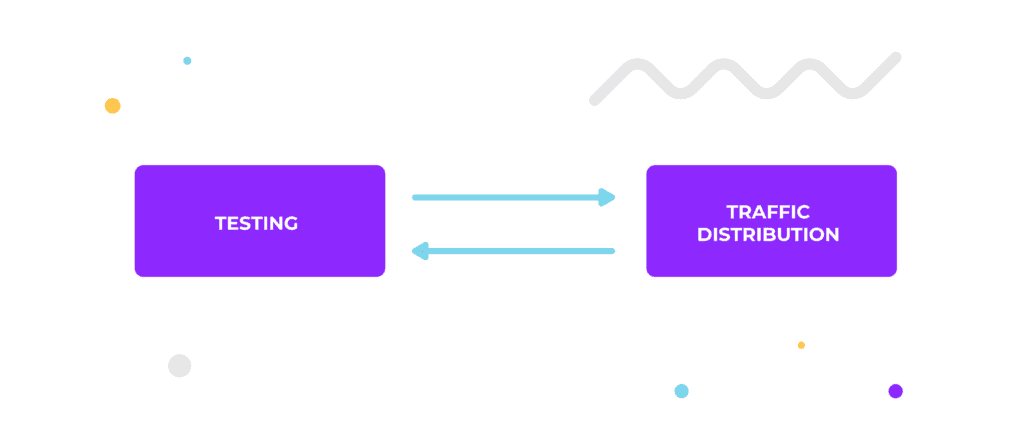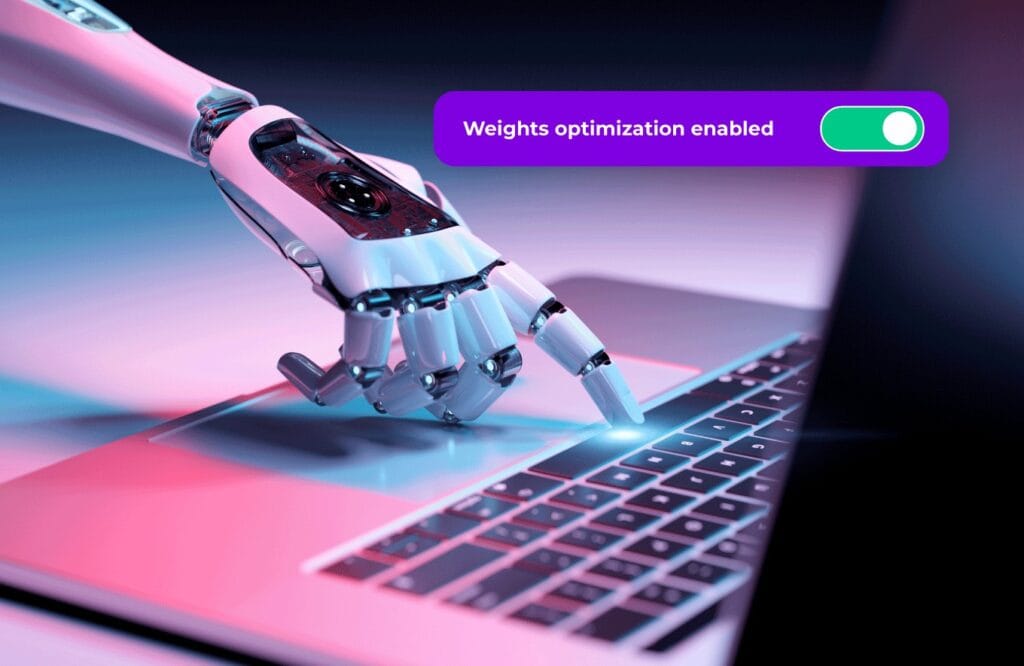While some aspects of digital marketing campaigns can rely on an advertiser’s intuition and instinct-based approach, optimizing traffic distribution as a result of thorough A/B testing procedures is best handled by science. No amount of intuition will ever replace serious, in-depth analysis for campaign optimization.
The problem is that everyone likes automation but not many people, especially marketers, like ‘magic box’ solutions, when decisions are made for them using ambiguous criteria.
In this article we want to explain what Traffic Distribution AI is and how the science behind it is applied. The goal is to evoke confidence in marketers that decisions made by our algorithm are actually the best ones possible.
A/B testing and traffic distribution
Firstly, let’s talk basics: what is A/B testing and how does it relate to traffic distribution?
For the most part, the various offers and landing pages you promote don’t achieve the same performance levels. Some bring better results, others worse, or no results at all. A/B testing allows you to quickly find a more profitable element by comparing it with another one on the same traffic.
If the winning element is responsible for all profits, you want to drive as much traffic as possible to it and cut out the non-performing one. But things are rarely that clear. Consider the following:
- The less-perfoming element may still bring you money, so it doesn’t make sense to cut it out completely.
- The performance of various elements may fluctuate over time
- You should test new elements constantly so that you always have something fresh and tested ready to go when your previous elements lose traction
The answer to these issues lies in traffic distribution: a way of dividing traffic between various elements of your campaign that brings you the best results. If you divide traffic smartly, you direct most traffic to the offer or lander that was proven to be most profitable while dedicating a smaller portion of it to other offers.
When the performance changes, the traffic distribution should also be changed with it. This process exists in a constant feedback loop.

Voluum allows its users to manually set precise weight values to distribute traffic between paths and also within paths between offers and landers. Marketers should adjust values constantly, so they reflect changes in performance. In reality, most advertisers set weights in Voluum once and then forget about them.
Luckily, there’s another way.
Traffic Distribution AI
We, the team behind Voluum, have recognized this problem a long time ago and worked hard on a solution. Our answer was the Traffic Distribution AI feature – a machine-learning solution that works all the time, constantly checking for any room for optimization.
This feature handles weights of offers, paths and landers automatically – you do not have to set them manually, don’t have to verify if the setting from yesterday still makes sense today. Traffic Distribution AI is smart – it knows how to to bring you best results while still feeding less profitable elements with traffic to monitor any potential changes in their performance.
This feature uses Bayesian statistics. Bayesian statistics are widely used in medical research, meaning that in some way our lives are dependent on them. In short, Bayesian statistics are great for building probabilistic models. The model’s initial probability values are based on previous knowledge and updated constantly with new information.
How Does It Work?
Traffic Distribution AI uses one of three metrics. If one is not available, it will switch to the other ones in the following order:
- If cost and revenue are reported for every element in the path, the calculations of the weights are based on ROI.
- If the revenue is reported for every element in the path but there is no cost information in Voluum, the calculations are based on EPV.
- If there is no revenue and cost, the calculations are based on CV
You can always override the automatic selection by manually choosing the metric an algorithm should optimize for. Note that conversion tracking is a requirement when it comes to using Traffic Distribution AI.
When turned on, Traffic Distribution AI will start a learning period and apply linear distribution of weights.
Once the learning period finishes, the weights will be adjusted with each calculation run, roughly every minute.
The feature optimizes weights using data from the last 24 hours. There is no option to configure this period of time, however, we believe that this time frame is the perfect balance between reaction time and precision.
How to set it up?
Although turning on the Traffic Distribution AI feature only requires enabling one toggle, there are some things to consider.
Firstly, Traffic Distribution AI can be applied to the following elements:
- Paths, where traffic is distributed between different paths set within one campaign
- Offers, were traffic is distributed among offers in a given path
- Landers, where traffic is distributed among landers in a given path.
You can activate automatic traffic distribution separately for each of these elements.
Secondly, when it comes to lander & offer optimization, you have two options: you can optimize them separately or combined.
- When optimized separately, the performance of landers and offers will be calculated independently of each other. The best performing lander and offer will be selected but it won’t mean that they perform in the most optimal way with each other
- When optimized combined, Traffic Distribution AI will direct the most traffic toward the best performing lander & offer pair, even if there are better performing landers and offers.
You need to decide which version works for you best. In most cases, the differences should be substantial.
Using Traffic distribution AI
Once you turn the toggle on, there’s little you have to do to keep it going. Your traffic will be distributed in the most optimal way while also monitoring the performance of less performant elements. Traffic Distribution AI will never completely stop traffic to a given element.

You can add additional elements to the funnel but it will reset the learning period, and so will turning the feature off and on again.
So, where’s the magic?
There is no magic, only statistical analysis toward selected goals based on 24 hour data sets and calculated once per minute. Doesn’t sound like much, but it is.
Traffic Distribution AI has been designed to take a load off your shoulders and perform calculations that normally you would never do. What you get is:
- Peace of mind
- More revenue
- Immunity for changes in traffic or performance




